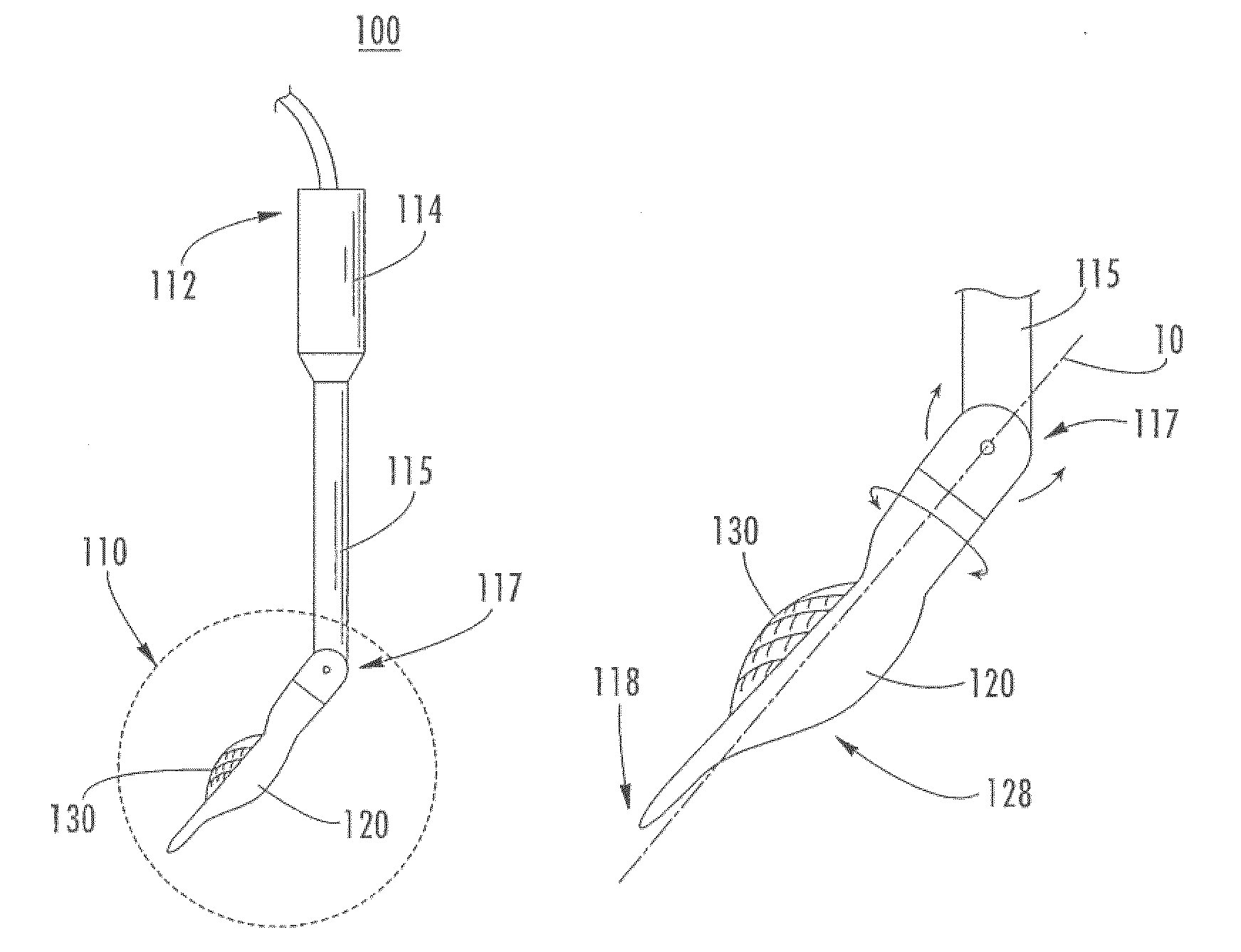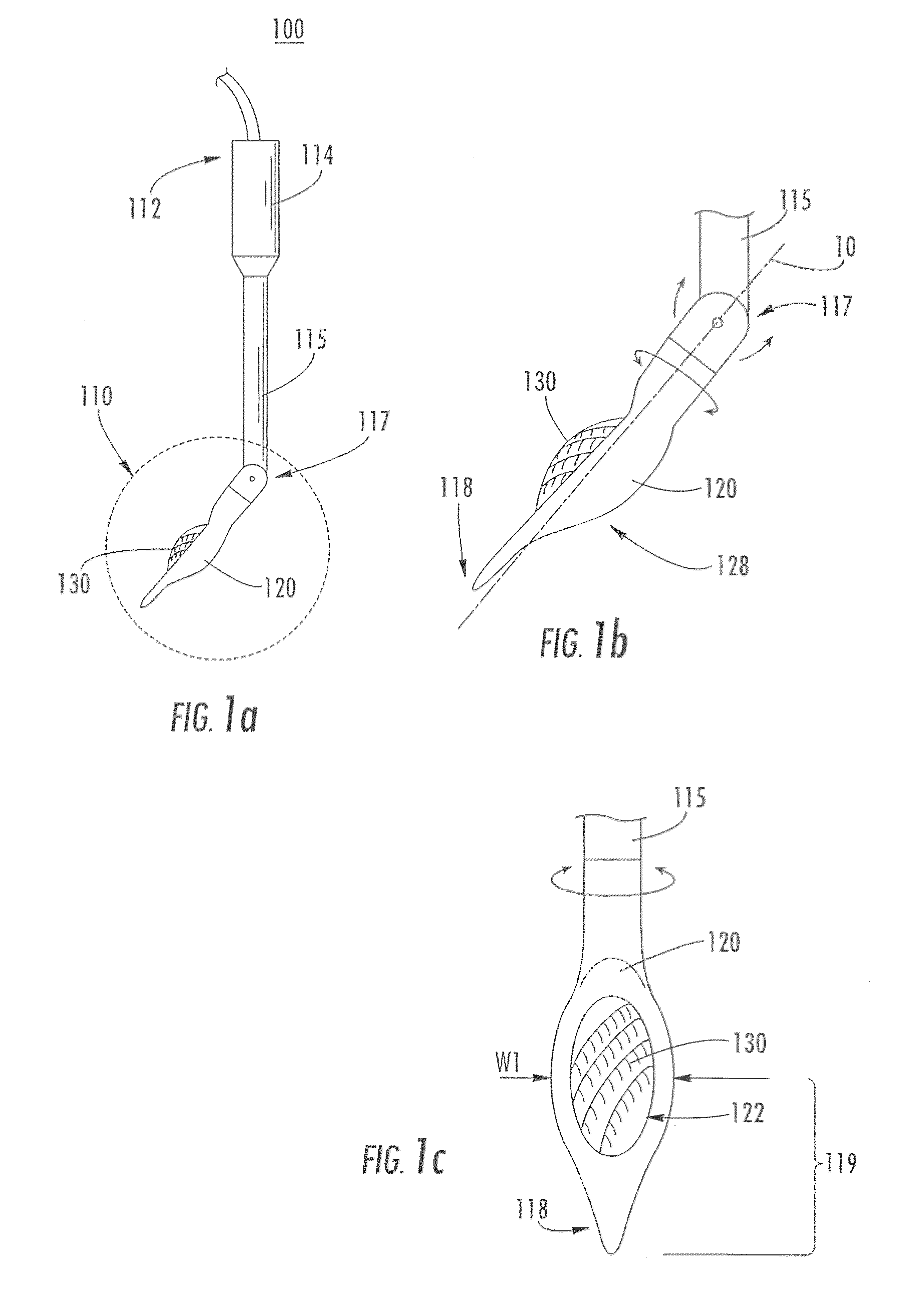Surgical instrument for orthopedic surgery
a surgical instrument and orthopedic technology, applied in the field of surgical instruments, can solve the problems of insufficient interval between nerve root and encroaching bone to safely conduct neural decompression using conventional tools, and achieve the effect of facilitating foraminal decompression
- Summary
- Abstract
- Description
- Claims
- Application Information
AI Technical Summary
Benefits of technology
Problems solved by technology
Method used
Image
Examples
Embodiment Construction
[0053]Various embodiments of the dissecting high speed burr according to the invention will now be described in reference to the FIGS. 1 through 5. The embodiments illustrated in these drawings are presented as examples of various embodiments of the invention only. These illustrations are not meant to limit the invention to these examples. The illustrations are not to scale and, thus, the relative dimensions of some of the aspects of the instrument may be exaggerated.
[0054]Referring to FIGS. 1a-1d, a surgical instrument 100 according to an embodiment of the invention is disclosed. The surgical instrument 100 comprises a hand piece 114 at its proximal end 112 and a bone burring surgical tool bit, a burr bit 130, at its distal end 110 housed in a protective hood 120. A generally hollow outer tube 115 connects the hand piece 114 to the protective hood 120.
[0055]In an embodiment of the invention, the outer tube 115 may be angled at a region 117 near the distal end 110 to allow the instr...
PUM
 Login to View More
Login to View More Abstract
Description
Claims
Application Information
 Login to View More
Login to View More - R&D
- Intellectual Property
- Life Sciences
- Materials
- Tech Scout
- Unparalleled Data Quality
- Higher Quality Content
- 60% Fewer Hallucinations
Browse by: Latest US Patents, China's latest patents, Technical Efficacy Thesaurus, Application Domain, Technology Topic, Popular Technical Reports.
© 2025 PatSnap. All rights reserved.Legal|Privacy policy|Modern Slavery Act Transparency Statement|Sitemap|About US| Contact US: help@patsnap.com



